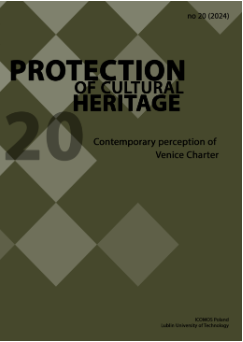Figura i ziemia: angielskie spojrzenie na konserwację historycznych przestrzeni publicznych
Nigel Walter
nigelesque@gmail.comDepartment of Archaeology, University of York, The King's Manor, York YO1 7EP (Wielka Brytania)
https://orcid.org/0000-0002-1152-522X
Abstrakt
Niniejszy artykuł rozważa niektóre aspekty sposobu rozumienia historycznej przestrzeni publicznej w Anglii, opierając się na wyborze odpowiednich wytycznych i badań opublikowanych przez Historic England. To buduje obraz tego, w jaki sposób przestrzenie publiczne są traktowane w oficjalnych publikacjach dotyczących dziedzictwa w Anglii i jak odnosi się to do międzynarodowej dyskusji, w szczególności podejścia Historycznego Krajobrazu Miejskiego (Historic Urban Landscape, HUL). Następnie przedstawiono kilka refleksji na temat mapowania figura – ziemia, co prowadzi do krótkiego omówienia kampanii "Townscape" w The Architectural Review. Artykuł kończy się refleksjami na temat implikacji dla konserwacji wynikających z szerszego postrzegania miasta jako krajobrazu kulturowego.
Słowa kluczowe:
historyczny krajobraz miejski, zmiana, Gordon Cullen, Townscape, Historic EnglandBibliografia
Araoz, G.F. (2011). Preserving Heritage Places under a New Paradigm. Journal of Cultural Heritage Management and Sustainable Development, 1 (1): 55–60.
Google Scholar
Bandarin, F. & van Oers, R. (2012). The Historic Urban Landscape: Managing Heritage in an Urban Century. Chichester: Wiley Blackwell.
Google Scholar
Collins, G.R. & Collins, C.C. (eds.) (2006). Camillo Sitte: The Birth of Modern City Planning. Mineola, N Y: D over.Cullen, G. (1961). To w n s c a p e. London: Architectural Press.
Google Scholar
Cullen, G. (1971). The Concise Townscape. London: Architectural Press.
Google Scholar
Engler, M. (2015). Cut and Paste Urban Landscape: The Work of Gordon Cullen. London; New York: Routledge.
Google Scholar
Erten, E. (2015). Townscape as a Project and Strategy of Cultural Continuity. In J.R. Pendlebury, E. Erten, & P.J. Larkham (eds.) Alternative Visions of Post-War Reconstruction: Creating the Modern Townscape, 33–53. Abingdon: Routledge.
Google Scholar
Herring, P. (2022). Strategically Assessing the Historic Landscape’s Sensitivity and Capacity in Relation to Change: A Discussion Document to Inform Preparation of Advice | Historic Eng land. 91/2022. https://historicengland.org.uk/research/results/reports/91-2022? searchType=research+report&search=*&searchResultsPerPage=100&sort=publicationDate+desc.
Google Scholar
Historic England (2008). Conservation Principles: Policies and Guidance for the Sustainable Management of the Historic Environment. London: English Heritage. https://historicengland.org.uk/images-books/publications/conservation-principles-sustainable-management-historic-environment/.
Google Scholar
Historic England (2017a). Understanding Place: Historic Area Assessments. http://historicengland.org.uk/images-books/publications/understanding-place-historic-area-assessments/.
Google Scholar
Historic England (2017b). Street Furniture. http://historicengland.org.uk/images-books/publications/dlsg-street-furniture/.
Google Scholar
Historic England (2017c). The Setting of Heritage Assets. http://historicengland.org.uk/images-books/publications/gpa3-setting-of-heritage-assets/.
Google Scholar
Historic England (2018a). Urban Landscapes. http://historicengland.org.uk/images-books/publications/drpgsg-urban-landscapes/.
Google Scholar
Historic England (2018b). Streets for All. http://historicengland.org.uk/images-books/publications/streets-for-all/.
Google Scholar
Historic England (2018c). Streets for All: East of England. http://historicengland.org.uk/images-books/publications/streets-for-all-east-of-england/.
Google Scholar
Historic England (2019). Conservation Area Appraisal, Designation and Management. http://historicengland.org.uk/images-books/publications/conservation-area-appraisal-designation-management-advice-note-1/.
Google Scholar
ICOMOS (1964). International Charter on the Conservation and Restoration of Monuments and Sites. Paris: ICOMOS.
Google Scholar
ICOMOS (1994). The Nara Document on Authenticity. ICOMOS. https://www.icomos.org/charters/nara-e.pdf.
Google Scholar
Le Corbusier ([1935] 1967). Radiant City. London: Faber & Faber.
Google Scholar
Le Corbusier ([1941] 1973). The Athens Charter, trans. A. Eardley. New York: Grossman Publishers.
Google Scholar
Pevsner, N. (1956). The Englishness of English Art, an Expanded and Annotated Version of the Reith Lectures Broadcast in October and November 1955. London: Architectural Press.Rowe, C. & Koetter, F. ([1978] 1993). Collage City. Cambridge, MA: MIT Press.
Google Scholar
Sitte, C. ([1889] 2006). City Planning According to Artistic Principles. In: G. R. Collins & C. C. Collins (eds.) Camillo Sitte: The Birth of Modern City Planning, 129–332. Mineola, NY: Dover.
Google Scholar
Taylor, K. (2015). Cities as Cultural Landscapes Reflections. In: F. Bandarin & R. van Oers (eds.) Reconnecting the City: The Historic Urban Landscape Approach and the Future of Urban Heritage, 179–202. Chichester: John Wiley & Sons.
Google Scholar
Trancik, R. ([1986] 2007). What Is Lost Space? In: M. Carmona & S. Tiesdell (eds.) Urban Design Reader, 63–69. Amsterdam and Boston, MA: Architectural Press.
Google Scholar
Turner, M. (2017). Managing Urban Heritage: From Nationalism to Neo-Liberalism and Beyond - the Rights to Heritage | Historic England. http://historicengland.org.uk/whats-new/debate/recent/town-and-country-planning-act-70th-anniversary/managing-urban-heritage/.
Google Scholar
UNESCO (2005). Vienna Memorandum on World Heritage and Contemporary Architecture – Managing the Historic Urban Landscape. UNESCO World Heritage Centre. https://whc.unesco.org/en/documents/5965/.
Google Scholar
UNESCO (2011). Recommendation on the Historic Urban Landscape. Paris: UNESCO. https://whc.unesco.org /document/160163.
Google Scholar
UNESCO (2013). New Life for Historic Cities: The Historic Urban Landscape Approach Explained. Paris: World Heritage Centre. https://whc.unesco.org/en/activities/727/.
Google Scholar
UNESCO (2016). The HUL Guidebook: Managing Heritage in Dynamic and Constantly Changing Urban Environments. http://historicurbanlandscape.com/themes/196/userfiles/download/2016/6/7/wirey5prpznidqx.pdf.
Google Scholar
Walter, N. (2017). The ‘Second Battle of Britain’: Lessons in Post-War Reconstruction. In: P. Schneider (ed .) Catastrophe and Challenge: Cultural Heritage in Post-Conflict Recovery. Proceedings of the Fourth International Conference on Heritage Conservation and Site Management. December 5–7, 2016, BTU Cottbus, 55–72. Cottbus: Brandenburgische Technische Universität Cottbus-Senftenberg IKMZ-Universitätsbibliothek.
Google Scholar
Walter, N. (2020a). Narrative Theory in Conservation: Change and Living Buildings. Abingdon and New York: Routledge.
Google Scholar
Walter, N. (2020b). The Narrative Approach to Living Heritage. Protection of Cultural Heritage, 10: 126–138.
Google Scholar
de Wolfe, I. (1949). Townscape. The Architectural Review, 106 (636): 354–362.
Google Scholar
Autorzy
Nigel Walternigelesque@gmail.com
Department of Archaeology, University of York, The King's Manor, York YO1 7EP Wielka Brytania
https://orcid.org/0000-0002-1152-522X
Statystyki
Abstract views: 59PDF downloads: 71
Licencja

Utwór dostępny jest na licencji Creative Commons Uznanie autorstwa – Na tych samych warunkach 4.0 Miedzynarodowe.








